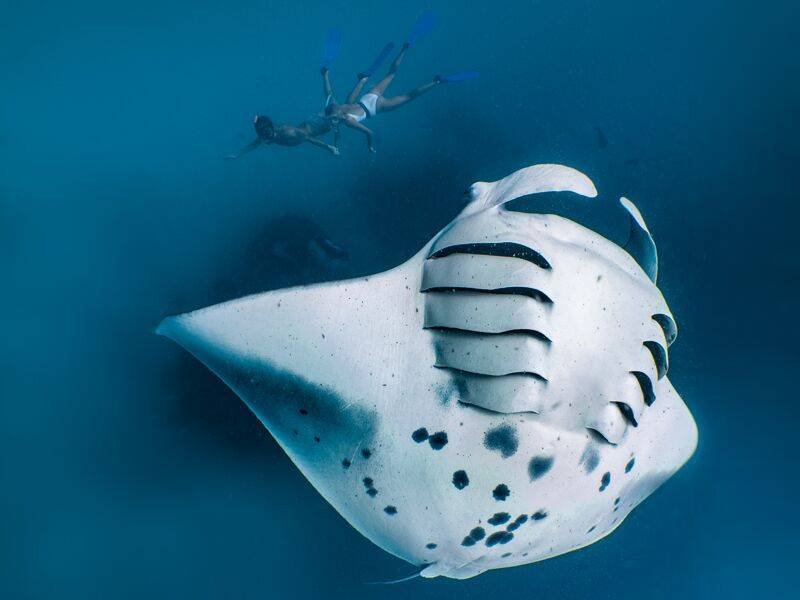How to Swim with Manta Rays in Hanifaru Bay - Tips for Swimming with Hanifaru Bay's Manta Rays during a Maldivian Getaway
Ranked among the most rewarding experiences one can have in the Maldives, swimming with manta rays is possible in areas such as Hanifaru Bay. Whether you are an avid diver or have experience in interacting with marine life underwater, it is crucial to get everything right during this unique adventure. From finding the best tour operators for your manta ray encounters to safety precautions, here's everything you need to know to make the most of swimming with manta rays in paradise.
1. Timing the Adventure
Those who are visiting the Maldives solely or primarily to go swimming with manta rays must first and foremost time their visit to coincide with the two manta ray seasons in the Maldives. The first manta ray season lasts from May to October when the Reef Manta Rays occupy the eastern reaches of the atolls. The second season between November and April is when the creatures are frequently spotted in the western area of the atolls. The months between May and November have generally been considered the ideal time for manta ray encounters as the marine species tend to feed on plankton-infested water during this time of year. Reef mantas are quite different from oceanic mantas who are harder to spot as they tend to pass through the Maldives in March and April and rarely stop for feeding.

Image via Amilla Maldives Resort and Residences
2. Why Hanifaru Bay?
Ranked among the top venues for spotting and swimming with manta rays in all of the Maldives, Hanifaru Bay enjoys a reputation for being one of the biggest manta ray feeding hubs in the world. Although manta rays can be frequently spotted in the shallow waters around the atolls when the periphery becomes a cleaning station, it is hardly possible to swim with the creatures in these areas. A UNESCO World Biosphere such as Hanifaru Bay is different as it is a gathering point not only for manta rays but whale sharks and other species. Some of the biggest feeding events that take place around the bay include the "cyclone feeding" session where nearly 250 mantas have been known to congregate. As a cul-de-sac with a sandy bottom, the bay with its narrow structure is an excellent location for swimming with mantas in a safe setting.
3. Forget about Diving
Visitors based at Amilla Maldives Resort and Residences or any other hotel or resort in the area should be aware that although swimming with manta rays is permitted in this protected biosphere, scuba diving and deep-sea exploration are not. Snorkelling is permitted in Hanifaru Bay provided that the sessions are no longer than 45 minutes and organised by a certified guide for Hanifaru Bay.
4. Getting There
Located near Baa Atoll's Dharavandhoo Island, Hanifaru Bay is easy to reach via boat transfer and seaplane. Those who are based near Male will find that the bay is a 20-minute flight away and that seaplanes headed for Hanifaru Bay land at the nearby Dharavandhoo Airport.
5. Safety Tips
Although swimming with manta rays is one of the best things to do in Maldives, it is not without risk. This is why taking the right precautions is a must and is considered crucial. Although manta rays are not dangerous or harmful, it is prudent to enter their presence calmly and quietly as the creatures get rattled by loud noises and other disturbances. Maintaining a distance of 3 metres between yourself and manta rays is also necessary while chasing after them will only scare mantas to disperse and swim away. Touching manta rays is prohibited and potentially dangerous to their health as human touch can damage the outer layer of their skin, which protects mantas from infections.
